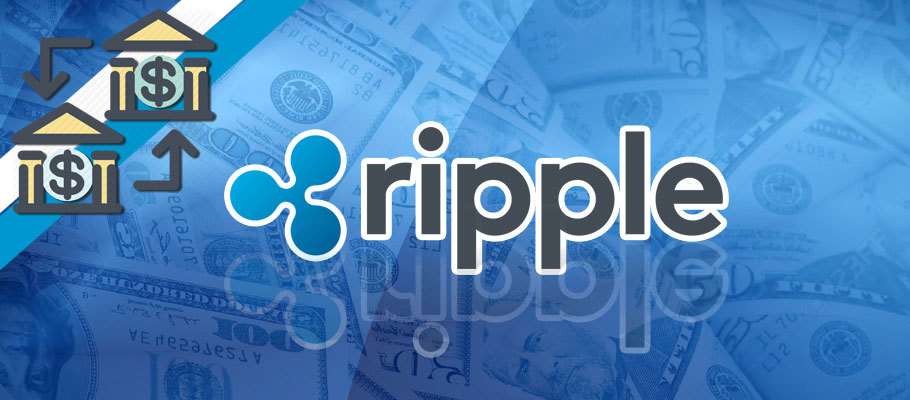
Published: August 21st, 2020
Ripple CEO has come out to vehemently criticize the Financial Times for opining that the tech company is transitioning from wholesale cross-border financial transaction solutions. Brad Garlinghouse said Ripple has no plans of resetting its strategy.
Brad Garlinghouse, the CEO of Ripple, has said his firm has no plans to divert from the original strategy of providing banks with wholesale cross-border payment solutions. The business leader responded to an article published in the Financial Times, claiming that Ripple is dumping its bank-focused approach in favor of a more diversified strategy.
Taking to Twitter, Brad reiterated that Ripple has no plans of veering off its strategy. He confirmed that banks from across the globe are continually leveraging the XRP token for cross-border payments.
On Thursday, August 13, the Financial Times published an article claiming that the tech company was ditching its primarily bank-focused approach to a more elaborate strategy. The report added that the company is opting for payment services not only for banks and other financial institutions but also for the ordinary consumer.
According to the article, Brad had said that Ripple is shifting by using its in-house tech team to transform the token to respond to new use cases and become the Amazon of the digital currency world.
Ripple’s sole aim has been the blockchain interbank settlement platform, which facilitates cross-border payments cheaply and faster than conventional wire transfers. On this layer, customers can use fiat currencies, or they can convert them to XRP tokens.
According to the Financial Times article, Santander, a Spanish bank which is also Ripple’s biggest partner, had balked out of a deal to use the token for its cross-border transactions. The article said Santander’s reasons were that XRP is not sufficiently traded even in the some of the coin’s key markets.
The attacks came not only from the Financial Times article but also from other quarters. Nathaniel Popper, who reports on technology for the New York Times, recently tweeted that many people had been misled to invest in Ripple using the projections that the company’s CEO gave at its launch.
Popper added that if these investors sunk their money when Brad pitched Ripple and its solutions that banks were dying to use, and held the investment to date, 90% of that capital would have gone up in flames.
Despite the naysayers’ swelling band, the Ripple CEO is a firm believer in his company’s innovation. He said that using his company’s tokens to solve the $10 trillion-problem is on course. Brad further explained that the platform’s On-Demand Liquidity (ODL), formerly called xRapid, has facilitated more than $2 billion worth of transactions since it was launched. The CEO said that xRapid’s figures rose 11 times in the first half of 2020 year-on-year.
Bloxy, the Ripple explorer, reported that the platform has consistently posted 900,000 transactions every day since January, with a peak of 3,000,000 transactions recorded on January 7.
Also, Ripple’s ODL is used by more than two dozen service providers, including MoneyGram, FlashFX, Azimo, Golance, and Viamericas.
Brad’s defense was not solitary. As is the tradition of the avid XRP fans, it did not take long before coming to the CEO’s rescue. Brad’s thread received a long line of support from the community, with members saying only glowing sentiments about the platform and its token.
Many users thought Brad’s response was thoughtful. One user, CryptoEsri, an avid YouTube personality, and XRP supporter, said he was happy Brad had come out to face his critics.
While Brad was getting his fair share of defense, his critics hit closer home, and hard. According to Craig Steven Wright, an Australian businessman and XRP pessimist, Ripple’s partnership with MoneyGram make little sense.
The computer scientist added that XRP does not add any value to MoneyGram’s operations. According to him, Ripple’s platform is not an efficient settlement system. Quoting figures that said Ripple had paid MoneyGram almost $45 million to offer liquidity for the tech firm’s ODL network in the first six months of 2020 alone, Wright said Ripple adds less if any value.
He questioned the association’s logic, saying that Ripple does not eliminate the need for money-laundering controls and other essential restrictions that banks have already installed. Wright feels that Ripple’s technology is not suitable for banks. He concluded that Ripple’s technology is an ambiguous solution in an industry that the tech firm does not understand well.
Aside from the rumors that Santander was balking at the XRP association, the critics’ case was flared by the news that Goldman Sachs, one of MoneyGram’s backers, had sold about $6 million worth of shares in the money remittance service provider.
MoneyGram is the leading company providing liquidity for Ripple’s settlement layer.
The U.S. investment bank informed the Securities and Exchange Commission of the U.S. (SEC) that it had disposed of more than 14,000 Series D Preferred Stock in MoneyGram in early August.
The shares that Goldman Sachs sold translate to almost 1.8 million common stock shares and are worth about $6.5 million. Despite this late transaction, Goldman Sachs still holds more than 18 million common shares in MoneyGram, worth about $65million.
The investment banks holding in MoneyGram is still more than that of Ripple Labs. The portion that the leading investment bank sold translates to a 9% stake in the cash remittance service provider. And, it is not clear what prompted Goldman Sachs to sell.
Ripple has come out to defend itself from critics. The Financial Times had published a post claiming that the tech firm was resetting to model its strategy to suit a broader use case. However, the CEO refuted these claims, adding that his company is still solely banks-focused and that its solutions are seeing a heightened uptake. As the war of words rage, it is clear that Ripple needs to show cause why the enthusiasm in its solutions is thawing.